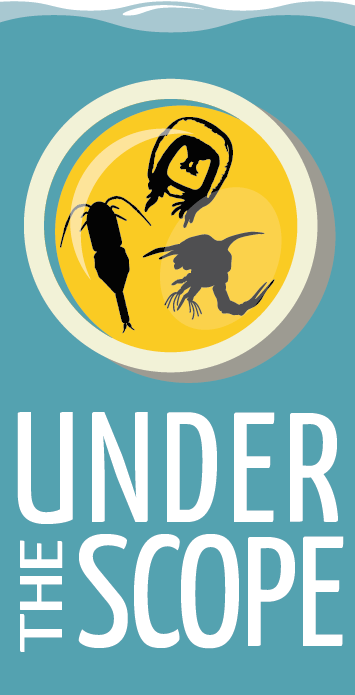Zooplankton Biodiversity

Exploring Zooplankton Biodiversity
written by Christopher Petrone
Summary
Biodiversity is a sign of a very healthy ecosystem. In this Under the Scope module, students evaluate the biodiversity of a lower Delaware Bay zooplankton sample, through observation and simple calculations.
Activity Use
This activity can be used as a part of any unit on organisms, biology, ecology, environmental science, and more.
Grade Level
Middle school, but adaptable to elementary and high school
Lesson Time
45 minutes
Essential Question
What is the biodiversity of a plankton sample from lower Delaware Bay, USA?
Objectives
After completing this activity, students will be able to:
- Name at least three zooplankters living in Delaware Bay
- Identify three similarities and three differences between the organisms
- Describe at least three zooplankton adaptations
- Calculate species richness of a zooplankton sample
- Determine the Species Diversity Index of a zooplankton sample
Vocabulary
biodiversity, biodiversity index, species richness, estuary, dead zone
Introduction (for teacher background/presentation or student reading)
Biodiversity is a measure of how many species and individuals live in a particular ecosystem or section of an ecosystem. High biodiversity is typically a sign of a healthy system. We often see high biodiversity in and around coral reefs and estuaries (areas of salt and fresh water input). However, natural and human-caused interruptions to an ecosystem can have long-lasting, detrimental impacts on biodiversity, such as hurricanes, forest fires, oil-spills, boat collisions, etc.
A healthy level of biodiversity includes not just the plants and animals we can see, but also those that we cannot see. Microscopic plants and animals, such as plankton, are at the base of the food web and feed the entire system either directly or indirectly. Bacteria are also important, as they break down dead materials and recycle the nutrients and energy so they are available to the system again. Abiotic (non-living) factors are also important, such as air and water temperature, sunlight, dissolved oxygen and salinity (underwater), etc. Most species can only tolerate a certain range when it comes to abiotic factors, so if a disturbance substantially affects the abiotics, it will have a negative impact on the plants and animals, and as a result, the system’s biodiversity will suffer.
Learning Activity
Look at the magnified plankton sample and the associated thumbnail images, and complete the student worksheet below.
Zooplankton Biodiversity Student Worksheet
Thinking & Discussion Questions
Answer the following questions based on the activity.
- The closer the Species Diversity Index (last column of the Table 1) is to 1, the more diverse the sample is; 0.5 would be “relatively diverse;” and 0 indicates “no diversity.” Would you consider this sample diverse? Why or why not?
- Why is high biodiversity important?
- This sample was taken during the daytime in the summer. How would you expect the sample to be same/different in the:
a. Nighttime in summer?
b. Daytime in winter? - This sample was taken at the mouth of the Broadkill River, a small, tidal tributary of lower Delaware Bay. Do you expect a sample taken from the Atlantic Ocean to be more or less diverse? Why?
- Estuaries like the Delaware Bay typically have high zooplankton diversity in the summer months. They are also nursery grounds for young fish. What makes an estuary a good place for zooplankton and young fish?
- How do changes in the environment, e.g. oil spill, dead zone, global climate change, etc., affect zooplankton? How might changes to zooplankton communities affect the marine food web?
Assessment
Performance: Did the student actively participate in the discussion portions of the activity, clearly demonstrating a grasp of the material? Was the student engaged during the activity?
Product: Did the student answer the activity questions, including the Student Worksheet, correctly and coherently, and provide evidence for their answers?
Extensions
- Catch and view a plankton sample from your local environment under the microscope. Identify the organisms, then measure biodiversity by calculating the species richness, species evenness, Simpson Index, and Shannon Index.
- Identify organisms and calculate biodiversity indices for a coral reef in this Data Analysis Teaching Activity from the Bridge website.

